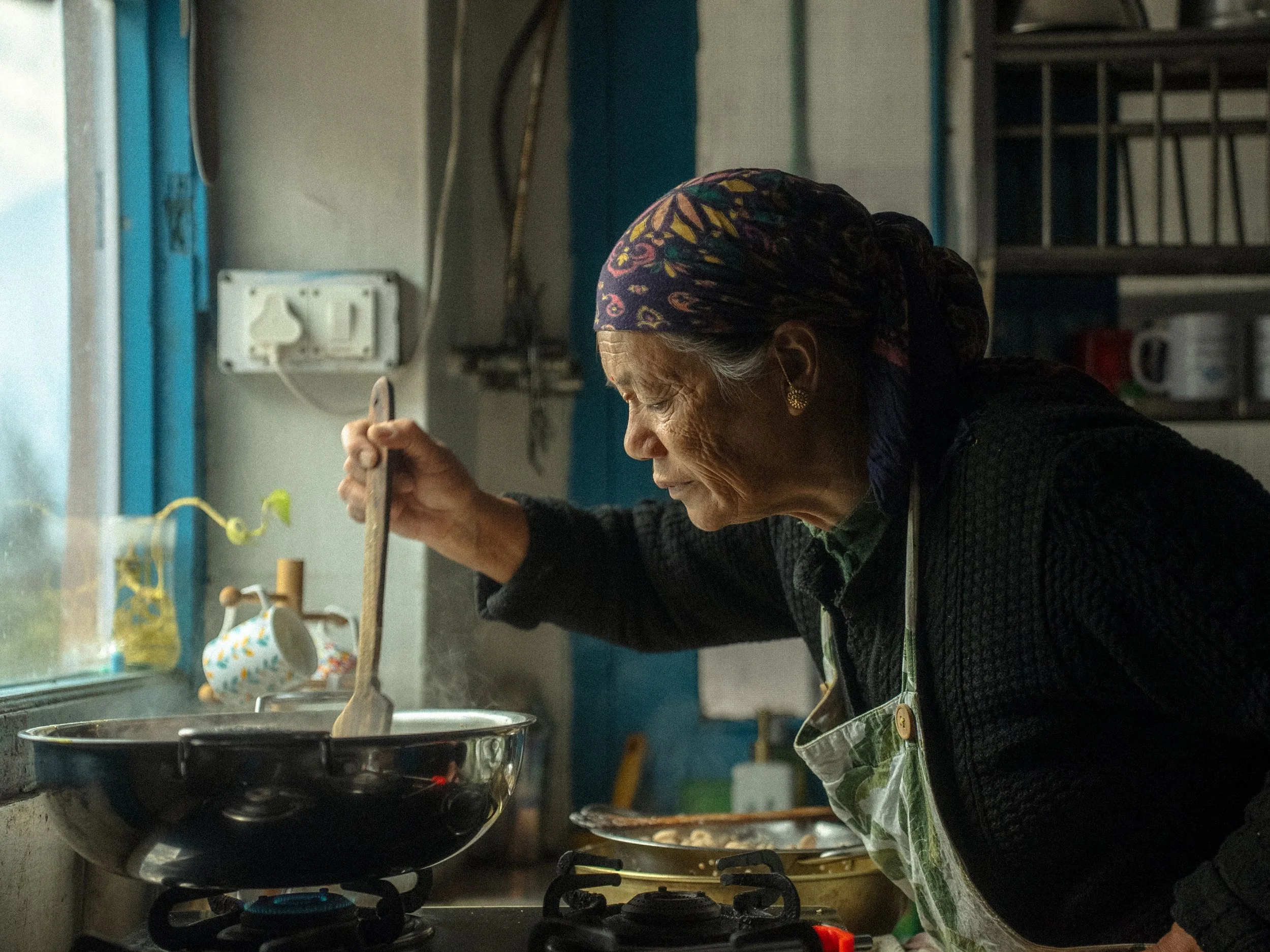Fumbi: A Classic Kalimpong Street Food

Fumbi is a delicious jelly-like by-product of a dish that remains close to the heart of Kalimpong.
“I think the actual Tibetan term for this is bhang-pheek, which refers to a soaked jelly extract, which gradually came to be known as phangbi or fumbi,” says Sonam, a resident of Kalimpong, a hilly district town in North Bengal. Fumbi, a soft yellow bouncy mung bean jelly tossed in a spicy red chilli paste, is a popular street food in Kalimpong and the neighbouring regions.
The Origins of Fumbi
The popular snack found its way here from Tibet in the late 50s and early 60s, with the Tibetan refugees who came to the town using the Jalepla Pass, a former trade route in East Sikkim that connected Lhasa, in Tibet, with India. “I wonder if fumbi is sold anywhere else in India besides our town, Kalimpong,” says an old-time resident of the town. The hill station has a weekly market, or haat, every Wednesday and Saturday where fumbi is sold. Besides the haat, there are many street vendors across the town that sell the dish. Fumbi is loved by school and college-goers, and fumbi sellers can be spotted around school and college peripheries, all over Kalimpong.
Fumbi is a by-product of phing, a glass noodle made of mung dal. The residual water that is left over from making phing is cooked down and coloured yellow with turmeric. Once the water boils, this gooey liquid is poured onto a flat plate to cool. This process of cooling allows the water to congeal into a jelly, that is later cut into cubes. Following this, the fumbi cubes are lightly fried in garlic and red chilli paste. “Back in the day, fumbi was served and sold in sal leaves, but these days paper plates are more common,” said Sumitri Sunar, a homemaker from Kalimpong. A plate of fumbi costs around twenty rupees.
Kalimpong’s Largest Export
Phing, the glass noodle made from mung dal, is widely exported to different parts of the country and also abroad, from Kalimpong. The noodle is cooked with meat or vegetables as a side dish. It is also eaten in the form of a salad, with the local cheese, churpi. These noodles hold an important culinary value among many ethnic communities of the region. A dish made of phing is a must-have at any festive occasion. “Phing is a dish that will be served at our homes on special occasions, or for a regular lunch, but its by-product fumbi is an out-and-out street food! You won't be served fumbi for dinner in any house in Kalimpong,” laughs Sunar.
According to a few Tibetan residents of Kalimpong, fumbi is called Liangfen in northern China, and sold as a street food. Many Tibetan refugees now call Kalimpong their home and the cuisine of the district town has a deep influence on Tibetan food. Besides setting up phing factories in the town’s outskirts, Tibetan families have also started making noodles. In fact, the town is now famous for exporting different varieties of noodles across the country. A book named The Noodle Maker of Kalimpong, written by Dalai Lama's brother, Gyalo Thondup, has beautifully captured the noodle-making tradition of the town.
Diwash Gahatraj is an independent journalist based in Siliguri. He writes on people, health, food & culture.
Photographs by Suchita Pradhan.
ALSO ON THE GOYA JOURNAL








